ASIC Miner ICERIVER KAS KS0 Profitability In the realm of cryptocurrency mining, the Iceriver KAS KS0 miner has garnered widespread attention. Tailored specifically for the Kaspa network's KHeavyHash algorithm, it boasts high hashing power and low power consumption, making it an ideal choice for many miners. In this article, we will comprehensively assess IceRiver KS0 profitability while considering the Kaspa market conditions and the attributes of KS0 miner. Kaspa Market Dynamics Kaspa is a vibrant cryptocurrency network aimed at delivering high performance and scalability for everyday transactions. At the time of writing this article, the Kaspa coin trades at approximately $0.04959. But it's essential to note that cryptocurrency markets are highly susceptible to price volatility. Hence, investors must remain vigilant about market dynamics. Additionally, the Kaspa network's mining difficulty and reward mechanisms play a role in mining returns. Attributes of the IceRiver KS...
Bitcoin Miner - Whatsminer M10 Evaluation
The Whatsminer M10 launched by BitMicro is said to have a hash rate that is 3 times higher than that of similar miners under the same power consumption, and it still maintains significant gains during the current period.
About miners
Silver-white alloy shell with blue logo, well-regulated cuboid, regular size for ASIC miners (390*130*220), simple yet connotative, compact, sturdy and beautiful, coupled with fully enclosed air ducts, front and rear dual cooling fans design. Let me show you the internal structure of the miner.
The inside of the miner consists of three hash boards side by side.
We pulled out one of the hash boards.
The entire hash board consists of 105 such small chips arranged. The chip arrangement interval is sparse from right to left, and its purpose is to improve heat dissipation efficiency. Because the fan is at the right end, the wind passes from right to left, and the wind's heat is relatively low at the right end so that the chips can be arranged relatively densely. As the heat increases, the heat dissipation pressure on the left end increases, so the arrangement distance of the left end gradually increases to reduce the heat dissipation pressure, which is a very scientific design.
The chip used by Whatsminer is QA1800.
Mining pool settings
As shown in the figure below, the test is performed below to connect the network cable and turn on the power supply.
Under the same network, use a computer as the control terminal, open the "Whatminer tool" (download link) provided by WhatMiner, select "Detect Miner IP," click "Start," and then long-press the "IP" of the miner Found" button for about 5s, the software can obtain the IP address of the miner.
Enter the miner's IP in the browser, access the miner management backstage, and set the mining parameters in "CGminer configuration." Pool 1 information can be selected from the default mining pool, or you can click "custom" to enter a custom mining pool.
During the evaluation process, F2Pool was selected as the primary mining pool information, and the mining pool address was set to: stratum+tcp://stratum.f2pool.com:25
Enter the username of the F2Pool fish pond in the Pool1 worker. Then, click "save&apply" in the lower right corner to start mining.
Enter the username of the F2Pool fish pond in the Pool1 worker. Then, click "save&apply" in the lower right corner to start mining.
Test data
The 16nm FinFET Compact chip can achieve a hash rate of 33TH/s±5% and then look at the power consumption, 2145W±10%, and the average power consumption per T is 65W.
This is a rapid performance improvement compared to the previous Whatsminer M3's 28nm198*SMiT1700 chip and 170W/T power consumption.
We use several mainstream miners on the market for comparison.
This is a rapid performance improvement compared to the previous Whatsminer M3's 28nm198*SMiT1700 chip and 170W/T power consumption.
We use several mainstream miners on the market for comparison.
Miner | Whatsminer M10S | Whatsminer M10 | Antminer S9 | Innosilicon T2 | Avalon A9 |
Hash rate | 55T | 33T | 13T | 17.2T | 20T |
power Consumption | 3575W | 2145W | 1300W | 1570W | 1700W |
Power consumption per T | 65W/T | 65W/T | 100W/T | 91W/T | 85W/T |
Judging from the data that the power consumption per T is consistent with the Whatsminer M10, which is 65W/T, we can speculate that the Whatsminer M10S should increase the number of chips internally. The power consumption of a single miner exceeds 3500W, which puts forward higher requirements for the power supply and distribution standards of mining farms.
The following data is the average value obtained after the miners run for 24 hours. The indoor temperature in this test is about 30~33 degrees.
According to actual measurement, the 24-hour average hash rate of Whatsminer M10 accessing the mining pool is 34.6T, the actual power consumption is about 2350W, and the average hash rate power consumption per T is 68W. Therefore, according to the current mining difficulty, when each kWh of electricity is 0.1USD/kWh, the daily income of miners can reach about $2.75.
The following data is the average value obtained after the miners run for 24 hours. The indoor temperature in this test is about 30~33 degrees.
According to actual measurement, the 24-hour average hash rate of Whatsminer M10 accessing the mining pool is 34.6T, the actual power consumption is about 2350W, and the average hash rate power consumption per T is 68W. Therefore, according to the current mining difficulty, when each kWh of electricity is 0.1USD/kWh, the daily income of miners can reach about $2.75.
Summary
1. The design of the miner is compact and sturdy. The hardware and backstage operating system have been optimized to improve the mining efficiency and operational stability. As a result, it is suitable for all cryptocurrencies using the SHA256 algorithm.
2. The measured data is within the fluctuation range of the official parameters. Therefore, the unit power consumption of 65W/T should be considered good among miners with the same algorithm at this stage.
3. According to the official parameters and the average market electricity price, the daily net income of a single miner is about 2.75$.
4. The noise and heat dissipation of miners are the same as the industry average.
2. The measured data is within the fluctuation range of the official parameters. Therefore, the unit power consumption of 65W/T should be considered good among miners with the same algorithm at this stage.
3. According to the official parameters and the average market electricity price, the daily net income of a single miner is about 2.75$.
4. The noise and heat dissipation of miners are the same as the industry average.
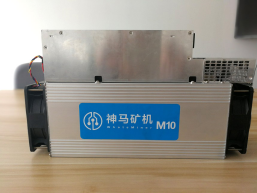


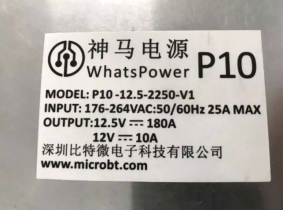
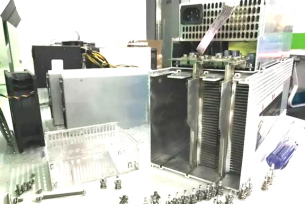
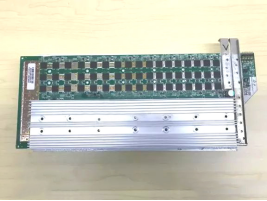


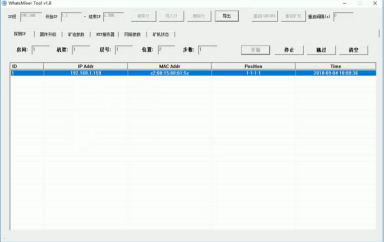




Comments
Post a Comment
Tell us your opinion